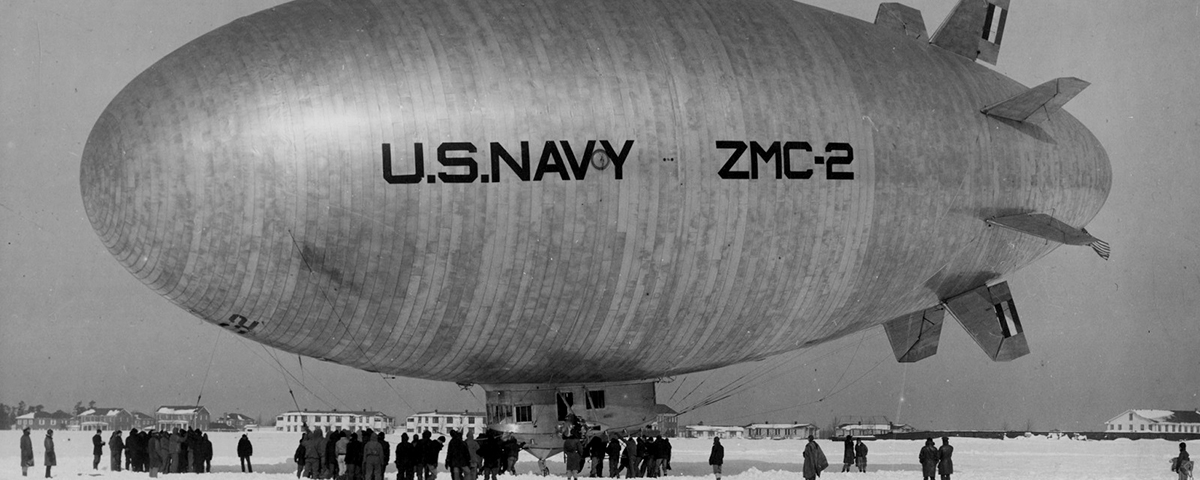Most airships are constructed using either of two design techniques. The non-rigid type, as in the familiar Goodyear blimps, is the most common. The other type is the rigid airship, which consisted of a fabric-covered skeleton enclosing a number of individual gas bags. The latter type included the spectacular giant dirigibles of the 1920s and ’30s, of which no examples have been constructed since before World War II. The U.S. Navy airship ZMC-2, however, embodied an entirely different structural approach, and it was unique in the history of lighter-than-air craft design.
Designed by Ralph Hazlett Upson and built by the Aircraft Development Corporation at the Naval Air Station at Grosse Ile, Mich., in 1929, the ZMC-2 was constructed entirely of thin sheets of Alclad—an aluminum alloy heavier than duralumin but far less susceptible to corrosion—and supported by a lightweight aluminum interior framework. Unlike rigid airships, the ZMC-2 had no individual gas bags. Apart from a couple of air-filled ballonets to regulate the interior pressure at different altitudes, the helium lifting gas was contained entirely within the metal shell.
The Aircraft Development Corporation, renamed the Detroit Aircraft Corporation in 1929, had been formed by a number of leading Detroit automobile manufacturers. In addition to building the metal-clad airship, the company controlled a number of other aircraft-manufacturing firms, including Lockheed and Ryan, and also owned the Grosse Ile Airport.
First flown on August 19, 1929, the ZMC-2 was relatively small because it was only intended to be an experimental test bed for the revolutionary construction technique. The aluminum airship was 149 feet long and 53 feet in diameter, with an internal capacity of 200,100 cubic feet and a useful lift capability of 12,868 pounds. Nicknamed the “Tin Bubble,” it was widely viewed with skepticism in the Navy, including its first captain, who was reluctant to fly it. Ironically, the ZMC-2 outlasted him, as he was subsequently killed in the crash of the dirigible USS Akron.
The advent of the Depression put an end to any plans the Navy may have had to procure additional all-metal airships, and Detroit Aircraft Corporation went out of business in 1931. The ZMC-2 outlasted its creator, too, completing 752 flights for a total of 2,265 flying hours before being grounded in 1939 and scrapped in 1941.

